US-Sport
NFL: Third and Long: Green Bay’s problem and Buffalo’s debacle
Week 11 had some memorable appearances to offer: The Buffalo Bills are experiencing a complete debacle after the quarterback swap, while the Minnesota Vikings are taming the dreaded Rams-Offense. In Green Bay you have to relativize the spontaneous criticism, instead another problem pushes itself intensively on. What’s more, the New Orleans Saints’ offense is a lot of fun – and what should Minnesota do with his QB question? In his weekly column, SPOX editor Adrian Franke looks back on the week in the NFL.
The decision during the week to replace Tyrod Taylor with Nathan Peterman was never really understandable to me. Buffalo’s problems are elsewhere – including run defense, the receiving corps and the offensive line – and yet this team was still in the middle of the playoff race. To make such a serious decision at this point in time seemed more like a scapegoat as a result of the debacle against the Saints last week than a serious attempt to optimise the playoff opportunities.
Sure, Taylor’s got his limitations. But that doesn’t mean you can’t build an offense around him – if you’re willing to align the team according to his qualities. In view of the transfer policy of the new Bills coach Sean McDermott, he had already indicated in the off-season that he was not prepared to do so. McDermott’s remodelling in the receiving corps strongly indicated that he wanted to have a West Coast offense with exact timing passes from the pocket and strict structures within the layout. Not Taylor’s strength.
Peterman, at least in theory, should be able to do that more easily. His college tape showed a quarterback, which in turn brings clear, above all physical limitations. McDermott, however, was apparently convinced that Peterman would play within his structures and thus implement the offense he wanted more precisely than is the case with Taylor’s freer interpretation.
What happened instead on Sunday was the receipt for an incomprehensible decision.
Peterman threw a Pick-6 on his first drive, which Taylor had not happened in 38 starts for the Bills. Peterman had five exceptions in 14 attempts and thus more than Taylor had in the whole season up to then (4). Within the first half of the season, Peterman broke the franchise rookie exception record for one game and, according to Pro Football Focus, had more “interceptable” passes than Taylor had in the entire season so far. He could have had at least one more pick, in addition to the fumble that still ran under him.
That brings us to the point: Taylor will probably never become an Aaron Rodgers, Tom Brady or Drew Brees – a quarterback who can carry a team on his own. And yes, he leaves Plays there. At the same time, however, his playing style gives the team a chance to win games: hardly any turnovers, few serious mistakes and the possibility to prepare an X-factor with his scrambles. In other words, if McDermott is willing to build an offense around the qualities of Peterman – whom he sees every day in training – he should also be willing to make an offense around Taylor’s qualities.
In any case, the chances of success would be greater with Taylor, at least in the short term, and Sunday should have made that clear to everyone. And let’s be clear: Buffalo went into this matchday as a playoff candidate with the chance to finish the almost 20-year-old playoff drought course. The quarterback exchange has put this undertaking at an enormous risk – and one shouldn’t allow it to distract attention from another topic: Buffalo forced a punt for the first time against the Chargers in the second half after 113 minutes and 9 seconds across the board. Jets, Saints and Chargers had previously put down 22 Possessions in a row without a punt against the Bills. And that’s a much bigger problem than Taylor’s quarterback style, not only because McDermott’s hobby horse is the Defense.
I, too, was one of those who questioned Mike McCarthy again yesterday in view of the desolate presentation of the Packers’ Offense. McCarthy has lived extremely well in the past years from Aaron Rodgers’ brilliance, his play calling and game plans were sometimes extremely uncreative, inflexible and simply outdated. To put it simply: In the end, much depended on Rodgers making good with his individual class from bad plays.
But here it is worthwhile to take a closer look at the tape. Because, as McCarthy and the Packers have just said, the route combinations and quarterback-friendly play designs were definitely there this week!
What is meant is: Green Bay integrated play action in a sensible way, but above all the route combinations were remarkably often coordinated with each other. Usually the packers often work with isolation routes and rely on scrambles of the quarterback to extend the play. This kind of play, which often looks so improvised and random in the game, actually trains Green Bay.
On Sunday this looked almost untypical for Packers-like: Switch-routes, where the running paths cross each other; level concepts, where one side of the field is targeted on several levels; deep routes, which created space for Underneath running paths, and so on. McCarthy gave Hundley Plays to deliver a much better game than what the fans in Lambeau saw on Sunday.
The problem on Sunday was instead Hundley himself. After extremely conservative appearances against Chicago he had exactly two Big Plays, and they were enough to win the game. But what was to be seen against Baltimore again: Hundley holds the ball for a felt eternity until the structure of the lay is gone – but he can’t do anything with it even then, he seems to wait for the perfect gap again and again. He is inaccurate, the first interception was very clear on his head when he read only one route.
Of course, this doesn’t mean that McCarthy unpacked a perfect game plan that would have put Hundley ahead of a still well-stocked Ravens defense. I would still like to see more screen passports, just to give you two examples, especially if the offensive line gradually collapses. Or some Zone-Read-Plays to use Hundley’s athletics and create space for the running backs.
Exactly eleven years after the last Franchise-Shutout Green Bay experienced this debacle again, the last home shutout against a team with fewer victories than defeats had it before on the 30th. October 1977. In this case, however, it is important to be clear: finding the guilt at McCarthy’s would be too simple, at least this week.
Great game in New Orleans on Sunday, which had two central takeaways for me: Everyone who still doubts that Kirk Cousins is playing a really good season should look at this tape. Cousins was hit hard by Saints-Defense on a regular basis, but he still stood in his pocket and gave his team a chance to win with several great passes.
Or to put it another way: As with the narrow defeat in Kansas City a few weeks ago, Washington would have beaten a heavyweight away from home if the team around Cousins had played on his level.
This brings me to the second point, because the Saints’ final layouts – first the breathtaking high-speed drive for equalization, then the game winning drive in overtime – show why this team is so much fun.
Drew Brees needed exactly three moves from his own 35-yard line until his team was in the final zone – and two of them were almost exact copies. The same formation, the same routes, only the pass went to a different receiver each time. Number 3, i. e. the touchdown, was then a great counter-construction: Instead of two in-line receivers (i. e. positioned on the offensive line), New Orleans chose a spread formation in the red zone and set up four wide receivers spread across the width of the field.
But they were all just a distraction: While the attention of the Secondary was directed to the two receivers on the right by a switch route (shortly after the release crossing paths), the two receivers on the left were covering the rear. From the backfield Alvin Kamara ran an angle route instead of a flat route like in the first two plays and was isolated against a linebacker. Admittedly, he was lucky at the Catch – but the play designs in New Orleans are great fun this year.
The story of the Overtime is then quickly told and is astonishingly similar in its basic idea: Again the Saints chose almost identical formations twice, both times it was a running play from the I formation (i. e. with fullback and running back positioned behind the quarterback). Only the process was different: One time the fullback as a simple lead-blocker with the running back behind it, the second time the fullback as a diversion, the left tackle as a pull-blocker and both receivers as an inside blocker.
Mark Ingram thanked him with two long runs, whereupon New Orleans kicked off the game’s winning-field-goal – and thus completed a historic feat: The Saints are the first team since 2011 to reach at least 15 points with less than three minutes on the clock and still be able to win the game. At that time, Tim Tebow and the Denver Broncos were of course successful.
Sometimes it’s not that complicated at all: the Vikings did more or less defensively what one could expect from them in the run-up to the rams. However, they did it so well that we didn’t see any more than 23 yards from the great Rams-Offense and no run of more than eight yards from Todd Gurley.
A few of the methods Minnesota used:
Page 1: The Deserved Bills Debacle, Green Bay’s Problem, the Saints and Notes
Page 2: Seahawks, Wildcard-Prediction, Vikings, Cowboys, Rams, Browns – your questions


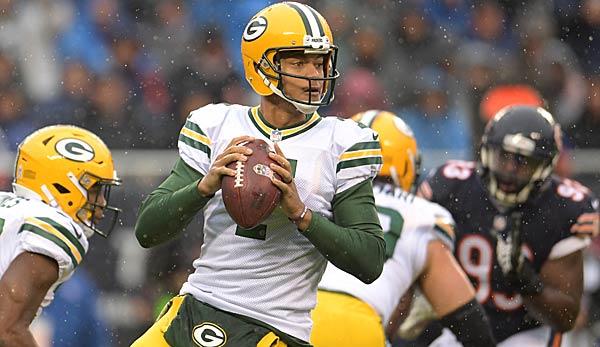




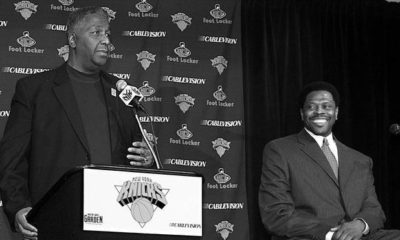
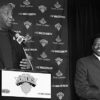

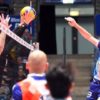
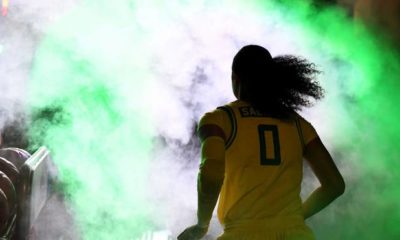
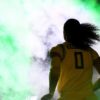





You must be logged in to post a comment Login